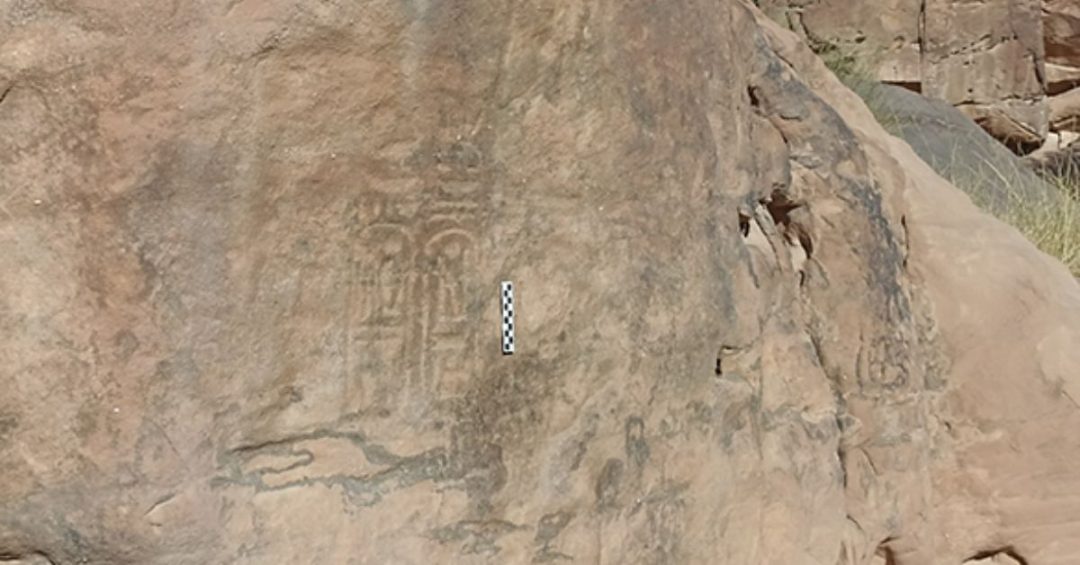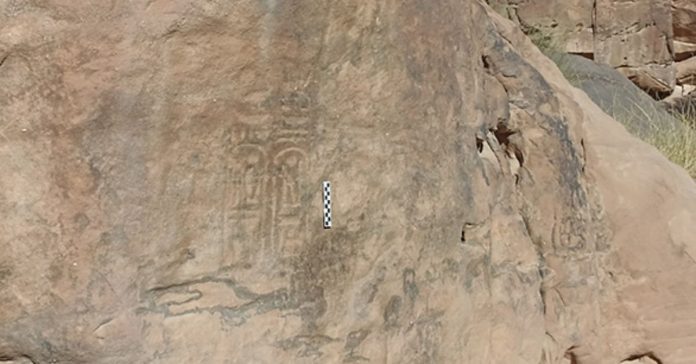Archaeologists have uncovered a hieroglyphic inscription bearing the royal cartouche of Pharaoh Ramses III (reigned 1186–1155 BCE) in southern Jordan’s Wadi Rum Reserve. Officials have hailed the discovery as a major archaeological development, noting that it offers valuable insights into how far Pharaonic Egypt’s influence extended in the region.
Ramses III Inscription: Official Announcement and Historical Context
Jordan’s Minister of Tourism and Antiquities, Lina Annab, announced the discovery during a press briefing. Esteemed Egyptian archaeologist Dr. Zahi Hawass attended the event. According to the ministry’s statement, the inscription is the first verified instance of its kind within Jordan’s borders. It provides rare physical evidence of Egyptian influence beyond the Nile Valley’s traditional territorial confines.
Annab emphasized the find’s broader implications. She called it a “landmark discovery that enhances our understanding of ancient connections between Egypt, Jordan, and the Arabian Peninsula.” She added that the discovery positions Jordan as a geographical crossroads of civilizations. It also highlights the nation’s role as an integral locus of cultural development in antiquity.

Archaeological and Cultural Significance
Minister Annab called the inscription a “qualitative addition” to Jordan’s extensive collection of historical inscriptions. She described the nation as an “open library” of cultural heritage. Annab stated that researchers will publish a formal academic announcement after completing detailed analysis. The study aims to produce a comprehensive interpretation of the inscription’s historical context and significance.
Ramses III Inscription: Egypto-Levantine Connections Explored
Dr. Hawass noted that the inscription features two cartouches. These hold the birth and throne names of Ramses III, a key ruler of Egypt’s Twentieth Dynasty. His name’s presence in the southern Levant suggests Egypt’s influence reached farther than scholars previously documented. This supports the hypothesis that Egypt conducted military or administrative campaigns in the region.
“The discovery is crucial,” Hawass stated. “It could open the door to a deeper understanding of Egypt’s interactions with the southern Levant and Arabian Peninsula over 3,000 years ago.”
Collaborative Research
Archaeologists identified the inscription southeast of the Wadi Rum Reserve, near the Jordanian-Saudi border. The discovery forms part of a joint archaeological initiative between Jordan and the Saudi Heritage Commission. This collaborative project seeks to map and interpret the extent of Ramses III’s influence in the region through epigraphic and material evidence.
Conclusion and Future Implications
Officials have lauded the discovery as a model of successful cultural and scientific cooperation between neighboring nations. The joint initiative exemplifies the growing importance of regional partnerships in the pursuit of shared heritage and historical inquiry. As further research unfolds, the inscription may significantly reshape scholarly understandings of Egypt’s imperial ambitions and its historical footprint in the Arabian Peninsula

